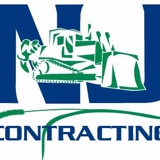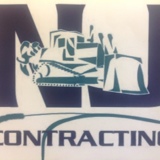Information
-
Document No.
-
Audit Title
-
Client / Site
-
Conducted on
-
Prepared by
-
Location
-
Personnel
Documentation
-
Emergency contacts accessible on site
-
Emergency Procedure understood
-
Pre-start Meeting held and site personnel attended (records)
-
JHA completed and accessible
-
JMP completed
-
SWP accessible on site
-
All personnel working on site are fully inducted
-
Sign Arrangement Plan completed and accessible on site
-
Work Permits in place, signed by personnel and displayed
PPE
-
All personnel are correctly wearing Hi-Vis L/Sleeve Shirts and L/Legs Pants
-
All personnel are correctly wearing hard/broad brim hats
-
All personnel are correctly wearing eye protection
-
All personnel are correctly wearing hand protection
-
All personnel have access to sunscreen and protection from sun/heat
Emergency Equipment
-
Remote Area First Aid Kits are available
-
First Aid Kits are routinely inspected and current
-
Fire Extinguishers are fitted in all vehicles
-
Fire Extinguishers are routinely inspected and current
-
First Aiders are available and identified to all personnel on site (in Pre-Start Meeting)
-
All electrical equipment inspected, tagged and current
-
Electrical Items Test Register accessible on site
-
Cable protection in place
Hazardous Areas and Substances
-
Restricted/Hazardous area identified/flagged
-
Work hazards are clearly signed (noise, excavations, moving plant)
-
The worksite is free (as far as practicable) from slip and trip hazards
-
Hazardous Substances used on site have appropriate controls
-
SDS's available for all Hazardous Substances used on site
Plant, Equipment and Tools
-
General condition of plant
-
Pre-Start Plant Checklist completed and accessible
-
Plant suitable for work application
-
Operator of plant qualified and licensed
-
Plant Identification easily visible
-
Warning devices fitted and current
-
Operators manual available
-
Wet-weather equipment approved and available on site
-
Hand and power tools applicable to jpb and in good condition
-
Slings and Lifting Gear inspected prior to use
-
Slings and Lifting Gear tested, tagged and current
Excavation
-
Underground/Overhead Services identified, marked and documented
-
Excavation procedure understood
-
Access provided (ladders/steps) in accordance with legislation
-
Slope stability and collapse prevention in place (battered/sheered)
-
Bunting erected around trench
Welding and Cutting
-
JHA completed and accessible
-
Specific PPE for Welders and Assistants worn
-
Shields/screens in place (to protect personnel working nearby)
-
Cylinders secured and combustibles moved
-
Sparks contained
-
Appropriate and adequate fire fighting equipment available
-
No 9" angle grinders allowed on site
-
Water drainage directed around site
-
Dust (excessive dusty cond
Light Vehicles
-
Light vehicles are registered and roadworthy
-
Weekly Light Vehicle Inspection completed
-
Remote Area First Aid Kit fitted and current
-
Fire Extinguisher fitted and current
-
Equipment stored safely (tied down or cargo net)
-
Appropriate Load Restraint available
-
Warning Devices working (flashing lights and beacons)
-
Tyres in good condition
-
UHF Channel/Important Phone Numbers List current
-
Water Stores available (min 2L per person)
Housekeeping
-
Appropriate tearoom facilities are available and neat and tidy with shelter
-
Appropriate toilet and wash room arrangements are available and neat and tidy
-
Waste disposal is adequate
-
Facilities are located on a level site with clear access
-
Trip hazards
-
Fuel receipt books up to date
-
Correct Fuel Card in vehicles
-
Lay down and storage areas are tidy
Air Pollution Control
-
Construction sites watered to minimise dust generated
-
Stockpiles of dusty materials (size with more than 20 bags cements) covered or watered?
-
Cement debagging process undertaken in sheltered areas
-
Vehicles carrying dusty loads covered/watered over prior to leaving the site
-
Demolition work areas watered (e.g. trimming activities by using breaker)
-
Dusty roads paved and/or sprayed with water
-
All plant and equipment well maintained (any black smoke observed, please indicate the plant/equipment location)
-
The enclosures around that main dust generating activities (e.g. grout mixing)
-
Hoarding (not <2.4m) provided along boundaries and properly maintained, any damage/opening observed, please indicate the location)
-
Speed control measures applied (e.g. speed limit signage)
Water Pollution Control
-
Water discharge license/s valid
-
Conditions of the license complied with (when the monitoring records and observe physically)
-
Waste water treatment system/s being used and property maintained on site (e.g. de-silting tank)
-
Waste water discharged to storm drains is treated appropriately
-
Measures provided to properly direct effluent to silt removal facilities (e.g. provide earth bunds/U channels)
-
U channel and manholes free of silt and sediment
-
Sedimentation traps and tanks free of silt and sediment
-
All manholes on site covered and sealed
-
Sandbags/earth bund adopted to prevent washing away of sand/silt and wastewater to drains, catch pit, public road and footpath
-
Vehicles, plant and equipment cleaned prior to leaving the site
-
The public road/area around the site entrance and site hoarding kept clean and free of muddy water
-
Wheel washing facilities well maintained to prevent overflow
-
Sand and silt settled out in wheel washing bay is removed
-
Domestic water directed to septic tanks or chemical toilets
Noise Control
-
The Construction Noise Permit (SNP) valid for work during restricted hours
-
Copies of the valid CNP's posted at site entrance/exit
-
Air compressors and generators operate with doors closed
-
Idle plant/equipment turned off or throttled down
-
Air compressors and hand held breakers have valid Noise Emission Labels (NEL)
-
Noise mitigation measures adopted (e.g. use nose barrier or enclosures)
-
Silenced equipment utilised
Waste Management
-
The site kept clean and tidy (e.g. litter free, good housekeeping)
-
Separate chutes used for inert and non-inert wastes
-
Separate labeled container areas provided for facilitation recycling and waste segregation
-
Construction wastes, recyclable wastes and general refuse removed off site regularly
-
Chemical wastes, if any, collected and disposed of properly by license collectors
-
Chemical waste producer license/s cover all major chemical waste produce on site
-
Chemical wastes properly stored and labeled
-
Oil drums and plant/equipment provided with drip trays
-
Oil spillages are contained and contaminated soil is removed from site immediately
-
Litter, foam or other objectionable matters in nearby water drain/sewer cleaned
-
Asbestos wastes handled by registered professionals
Storage of Chemicals and Dangerous Goods (DG)
-
Chemicals stored and labeled properly
-
Storage of DG comply withe license conditions
-
Property measures to control spillage during maintenance or to control other chemicals spillage (e.g. drip trays)
-
Spill kits/sand/saw dust used for absorbing chemical spillage readily accessible
Protection of Flora, Fauna and Historical/Cultural Heritage
-
Disturbance to terrestrial flora and fauna minimised (if rare species identified)
-
Cultural Heritage measures taken to preserve items
Resource Conservation
-
Water is recycled possible for dust suppression
-
Water pipe leakage and wastage prevented
-
Diesel-powered plant and equipment shut off while not in use to reduce excessive use
-
Energy conservation practices adopted
-
Metal or other alternatives used to minimise the use of timber
-
Materials stored in good condition to prevent deterioration and wastage
-
Pesticides used under the requirement of the Department of Agriculture, Fisheries and Forestry
Emergency Response Procedures
-
Fire Extinguishers and fire-fighting facilities properly maintained and in date
-
Accidents and incidents reported and reviewed and corrective actions identified and recorded







